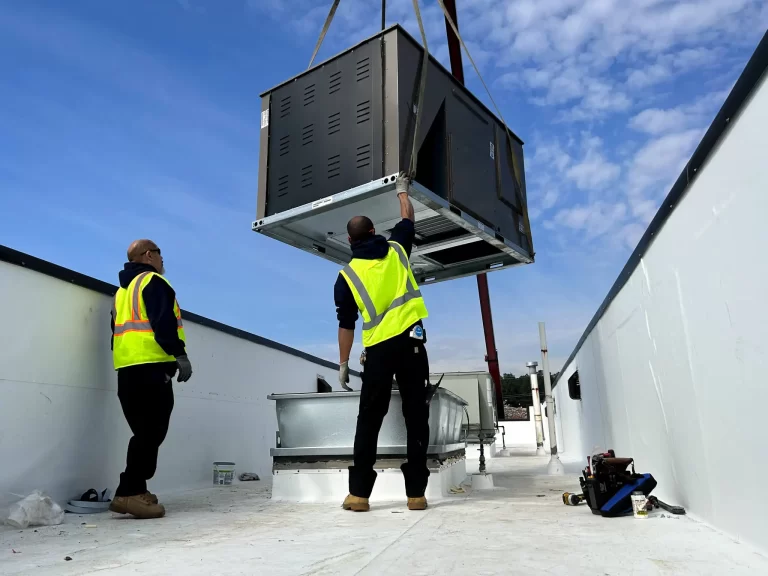Indoor air quality is a topic that is often overlooked, but it plays a crucial role in our overall health and well-being. In Ashburn, like many other areas, the quality of our indoor air can be compromised by various pollutants and allergens. Understanding and addressing these issues is key to creating a healthy living environment for ourselves and our families.
Understanding Indoor Air Quality
Before we dive into the solutions, let’s first understand the importance of good indoor air quality. The air we breathe indoors can be several times more polluted than outdoor air, mainly due to the lack of ventilation and the accumulation of toxins. Poor indoor air quality has been linked to various health problems such as respiratory issues, allergies, and even cardiovascular diseases.
The Importance of Good Indoor Air Quality
Good indoor air quality is essential for our well-being because we spend the majority of our time indoors. Adequate ventilation and filtration systems help remove pollutants and allergens, ensuring that we have clean and fresh air to breathe. This not only improves our overall health but also enhances our concentration and productivity.
When we think about indoor air quality, we often focus on the immediate effects it has on our health. However, the long-term consequences can be equally significant. Exposure to poor indoor air quality over an extended period can lead to chronic respiratory conditions, weakened immune systems, and even an increased risk of developing certain types of cancer.
Furthermore, the quality of indoor air can have a direct impact on our mental well-being. Studies have shown that breathing in clean air can improve our mood, reduce stress levels, and enhance cognitive function. On the other hand, exposure to pollutants and toxins can contribute to feelings of fatigue, irritability, and difficulty concentrating.
Common Indoor Air Pollutants in Ashburn
In Ashburn, there are several common indoor air pollutants that we need to be aware of. These include mold spores, dust mites, pet dander, tobacco smoke, volatile organic compounds (VOCs), and more. These pollutants can enter our homes through various sources such as cleaning products, furniture, and even outdoor pollutants that seep indoors.
Mold spores are a significant concern in humid climates like Ashburn. When moisture levels are high, mold can grow on surfaces such as walls, ceilings, and even furniture. Inhaling mold spores can trigger allergies and respiratory issues, especially in individuals with pre-existing conditions like asthma.
Dust mites, microscopic creatures that thrive in warm and humid environments, are another common indoor air pollutant. They feed on dead skin cells and can be found in bedding, upholstered furniture, and carpets. Dust mite allergens can cause allergic reactions, leading to symptoms like sneezing, coughing, and itchy eyes.
Pet dander, the tiny flecks of skin shed by animals, can also contribute to poor indoor air quality. Even if you don’t have pets, pet dander can be brought into your home through clothing or by visitors who have pets. Allergies to pet dander can cause respiratory distress and worsen existing asthma symptoms.
Tobacco smoke is a well-known indoor air pollutant that poses significant health risks. Secondhand smoke contains more than 7,000 chemicals, including at least 70 known to cause cancer. Exposure to tobacco smoke can lead to respiratory problems, heart disease, and even sudden infant death syndrome (SIDS) in infants.
Volatile organic compounds (VOCs) are chemicals emitted as gases from various products, including paints, cleaning supplies, and furniture. Prolonged exposure to VOCs can cause eye, nose, and throat irritation, headaches, and even damage to the liver, kidneys, and central nervous system.
It’s important to be aware of these common indoor air pollutants in Ashburn and take steps to minimize their presence in our homes. Regular cleaning, proper ventilation, and the use of air purifiers can all help improve indoor air quality and protect our health.
Assessing Your Indoor Air Quality
So, how do you know if your indoor air quality is compromised? There are a few signs to look out for:
Signs of Poor Indoor Air Quality
- Increased allergies or asthma symptoms
- Excessive dust accumulation
- Mold or mildew growth
- Musty or unpleasant odors
- Constant headaches or fatigue
If you notice any of these signs, it may be time to assess your indoor air quality with professional air quality testing.
Professional Air Quality Testing
Professional air quality testing can provide you with a comprehensive analysis of the pollutants present in your home. This testing involves sampling the air and analyzing it for various pollutants. This information will help identify the specific issues you need to address to improve your indoor air quality.
Solutions for Improving Indoor Air Quality
Now that we have a better understanding of indoor air quality and how to assess it, let’s explore some solutions to improve the air in our homes:
Air Purifiers and Filters
Air purifiers and filters are powerful tools in improving indoor air quality. They help trap and remove pollutants, allergens, and even some viruses and bacteria from the air. Investing in a high-quality air purifier or upgrading your HVAC system with efficient filters can significantly improve the air you breathe.
Humidity Control Solutions
In Ashburn, humidity can be a challenge, especially during the summer months. Excessive humidity can promote mold growth and exacerbate allergies. Installing a dehumidifier or using air conditioning systems with humidity control features can help maintain optimal humidity levels and reduce the risk of moisture-related issues.
Ventilation Improvements
Proper ventilation is essential to eliminate stagnant air and introduce fresh outdoor air into your home. Opening windows and doors, using exhaust fans in kitchens and bathrooms, and ensuring the proper functioning of your HVAC system’s ventilation components are all effective ways to improve ventilation and indoor air quality.
Maintaining Your Indoor Air Quality
Improving indoor air quality is a continuous process. Here are some maintenance tips to ensure that your efforts are long-lasting:
Regular Cleaning and Dusting
Regular cleaning and dusting help reduce the accumulation of allergens and dust particles in your home. Vacuum carpets, wash bedding regularly, and wipe surfaces with microfiber cloths to effectively trap and remove allergens.
Proper Maintenance of HVAC Systems
Your HVAC system plays a pivotal role in maintaining good indoor air quality. Regularly schedule professional maintenance to ensure that filters are clean, ducts are clear, and all components are functioning optimally.
The Role of Indoor Plants in Air Quality
Indoor plants not only add beauty to your living space but can also help improve air quality. Certain plants, such as snake plants and peace lilies, have air-purifying properties and can help remove toxins from the air.
The Impact of Indoor Air Quality on Health
Poor indoor air quality can have a significant impact on our health. Understanding the risks associated with compromised air quality can motivate us to take action:
Health Risks of Poor Indoor Air Quality
Exposure to pollutants and allergens found in indoor air can lead to respiratory problems, allergies, and asthma attacks. Long-term exposure to toxins and chemicals can also contribute to more severe health issues such as cardiovascular diseases and even certain types of cancer.
Benefits of Improved Indoor Air Quality
On the other hand, improving indoor air quality can bring a range of benefits. Cleaner air means improved respiratory health, better sleep, increased productivity, and reduced risk of allergies and illnesses. Investing in your indoor air quality is an investment in your overall well-being.
By understanding indoor air quality and implementing the necessary solutions, we can create a healthier living environment for ourselves and future generations. Remember, a breath of fresh air indoors goes a long way in promoting a happy and healthy lifestyle.


